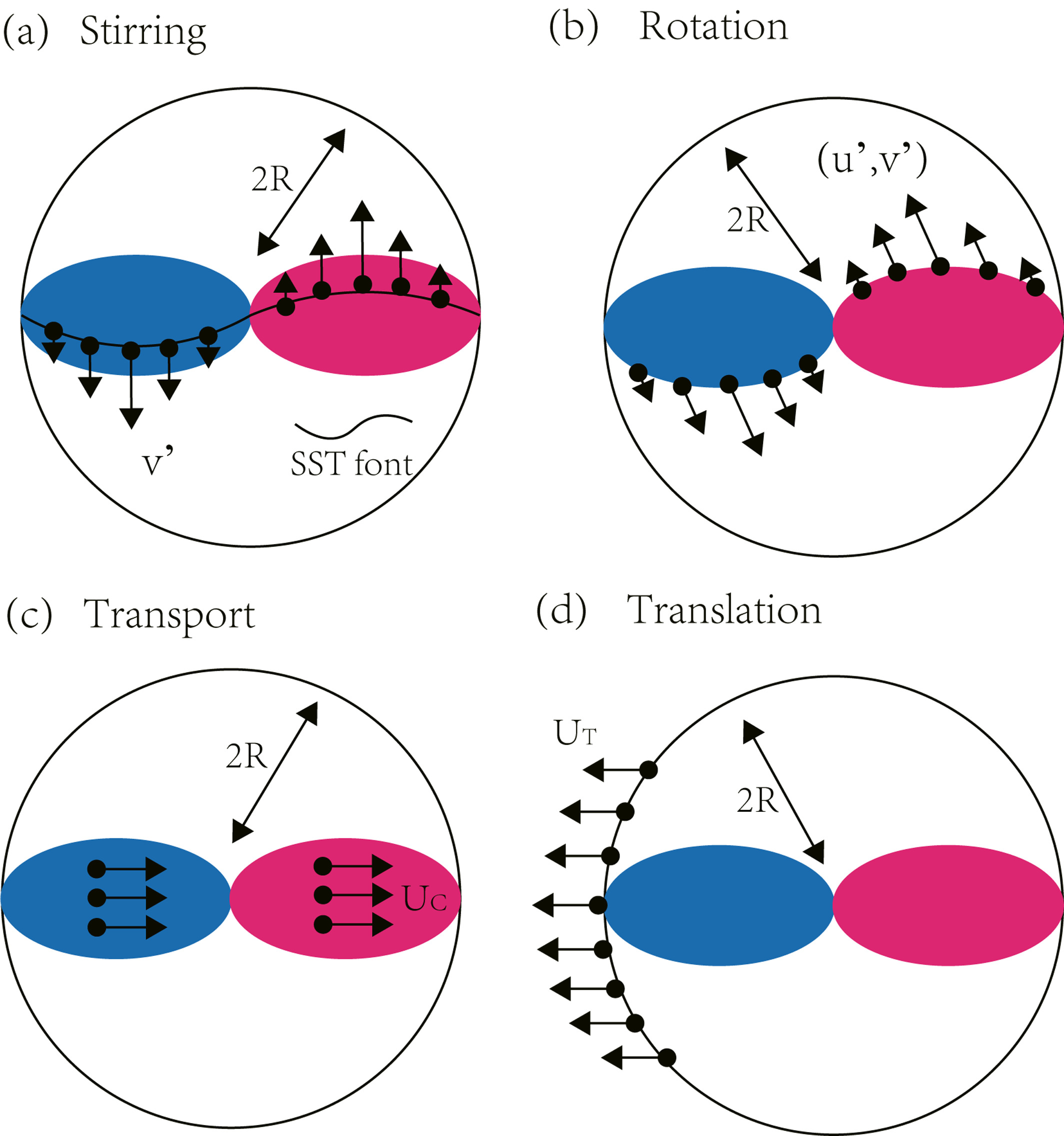Structure of Sea Surface Temperature Anomaly Induced by Mesoscale Eddies in the North Pacific Ocean
Mingkun Lv, Fan Wang, Yuanlong Li, Zhengguang Zhang, Yanan Zhu
Published in Journal of Geophysical Research: Oceans, FEB 2022
Sea surface temperature anomalies (SSTAs) induced by oceanic mesoscale eddies trigger mesoscale air-sea interactions and modulate large-scale climate systems. Yet, how eddies drive SSTAs has not been firmly established; particularly, the relative importance of lateral stirring and vertical pumping remains a debated issue. This study investigates characteristics and generation mechanisms of mesoscale eddy SSTAs in three eddy-enriched domains of the North Pacific Ocean: the Kuroshio Extension (KET), the Subtropical Countercurrent (STCC), and the North Equatorial Countercurrent (NECC). Analysis of satellite observational data reveals quasi-monopole eddy SSTAs in the KET and NECC and dipole-like eddy SSTAs in the STCC. By investigating spatial and seasonal variations and performing sensitivity experiments using an idealized model, we demonstrate that lateral stirring plays a more important role than vertical pumping in causing mesoscale eddy SSTAs. The eastward transport by the strong background current UC (∼0.6 and ∼0.4 m s−1 in the KET and the NECC, respectively) and the westward eddy translation UT (∼−0.2 m s−1 in the NECC) can dramatically modify the structure of SSTA. The pure stirring effect of eddy rotation velocities generates strong dipole-like SSTAs. Owing to the eastward UC and the westward UT, the western SSTA pole tends to approach the eddy center, while the eastern SSTA pole departs from the eddy and scatters along the eddy trajectory. These effects reduce the eddy SSTA amplitude and favor the emergence of quasi-monopole structure. This work provides a useful benchmark for model simulations of mesoscale SST variability and air-sea interaction.

Fig. Sketch of the four processes: (a) Stirring, (b) Rotation, (c) Transport, and (d) Translation. The cyclonic eddy is shown as the example. Blue and red shadings denote cooling and warming sea surface temperature anomalies (SSTAs) produced by the eddy. In (a), meridional eddy velocity v′ (arrows) distorts the mean sea surface temperature (SST) front (black curve) to produce SSTAs; in (b), the rotation velocities (u′, v′) rotates the SSTAs produced by stirring; in (c), the mean current UC transports the SSTAs eastward; in (d), eddy translate westward at a speed of UT and departs from the generated SSTAs.
Lv, M., Wang, F., Li, Y., Zhang, Z., & Zhu, Y. (2022). Structure of sea surface temperature anomaly induced by mesoscale eddies in the North Pacific Ocean. Journal of Geophysical Research: Oceans, 127, e2021JC017581. https://doi.org/10.1029/2021JC017581